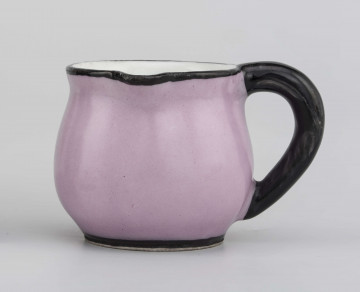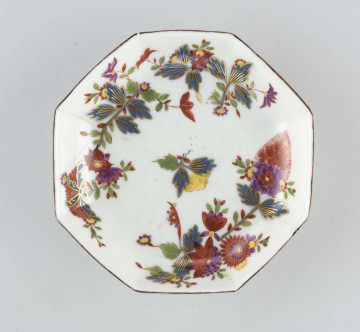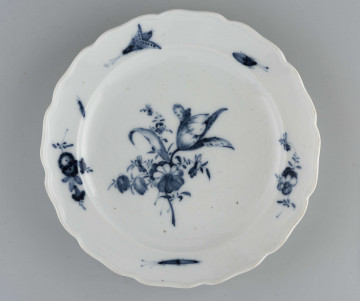
Creamer jug
1825 — 1835
National Museum in Lublin
Part of the collection: European porcelain
The onion pattern is a phenomenon in the history of European porcelain as it has been used with various modifications for almost three hundred years. It was introduced in Meissen around 1730, and its creator, Johann David Kretzschmar, was inspired by Far Eastern porcelain, especially those from the period of the Ming dynasty in China, with a blue decoration painted on a white background. In the centre of the composition, a bamboo shoot grows out of the ground. It is entwined with a branch of the Japanese ominaeshi flower; a chrysanthemum blossom is next to it, and in the middle is a peony with serrated leaves. In Asian cultures, bamboo is a symbol of endurance, longevity and strength. The thick bamboo branch with the plant surrounding it represents cohesion. Ominaeshi is an inconspicuous plant, but Japanese poets marvelled at its beauty, linking it to the symbolism of femininity. The chrysanthemum symbolises happiness and long life, and as an image of the sun – due to the radial arrangement of the petals – it brings joy and cheerfulness. Peonies were regarded as a symbol of wealth and honour; they were considered the imperial flower, and during the Qing Dynasty they were recognised as the national flower of China. On the collar of the platter we see the motif of bulbs, which inspired the name of the design. It is the result of a misreading of the Eastern original. There, pomegranates and peaches as symbols of fertility and longevity were painted, which in Meissen took on a form similar to the domestic onion.
Barbara Czajkowska
Author / creator
Dimensions
cały obiekt: height: 34 cm, width: 44 cm
Object type
dish
Technique
underglaze paints
Material
porcelain
Creation time / dating
Creation / finding place
Owner
The National Museum in Lublin
Identification number
Location / status

1825 — 1835
National Museum in Lublin

1735 — 1745
National Museum in Lublin

1763 — 1774
National Museum in Lublin
DISCOVER this TOPIC
National Museum in Lublin
DISCOVER this PATH
Educational path